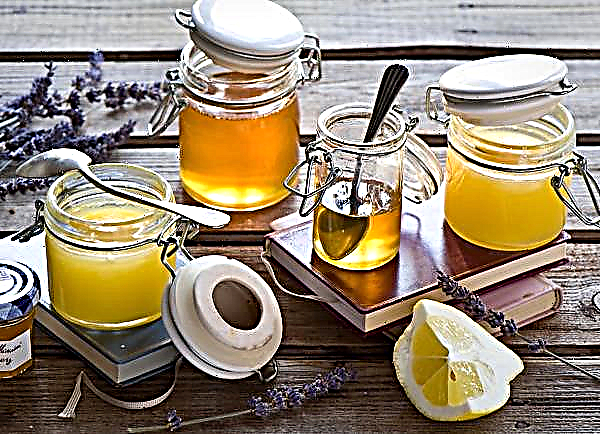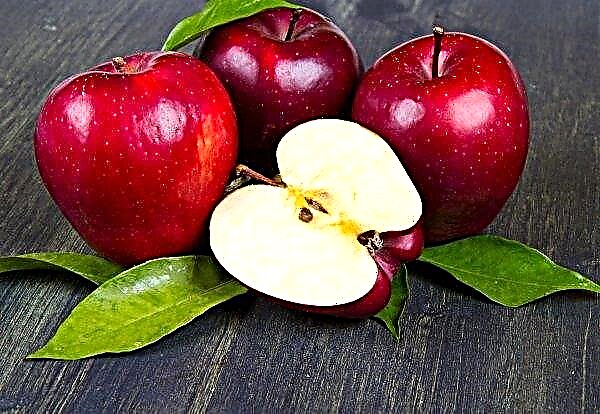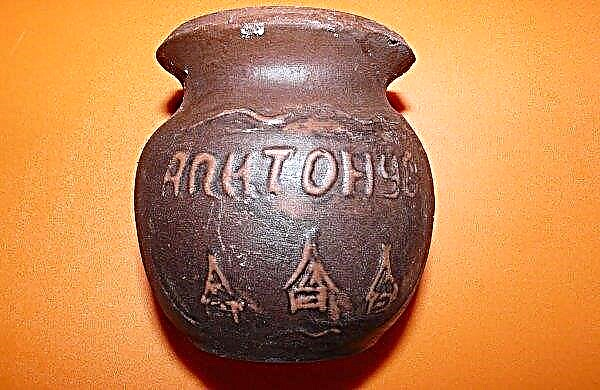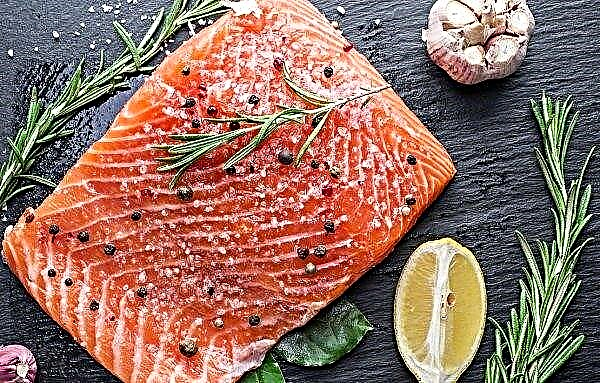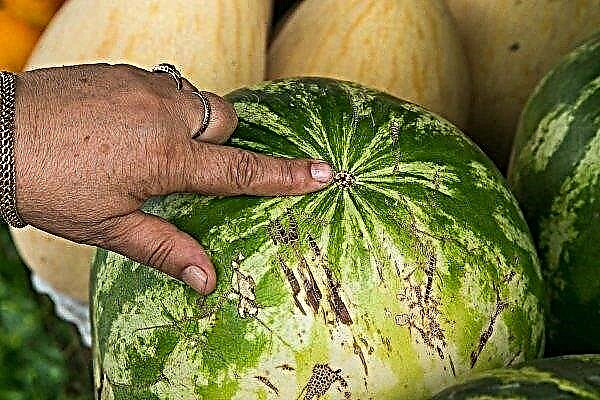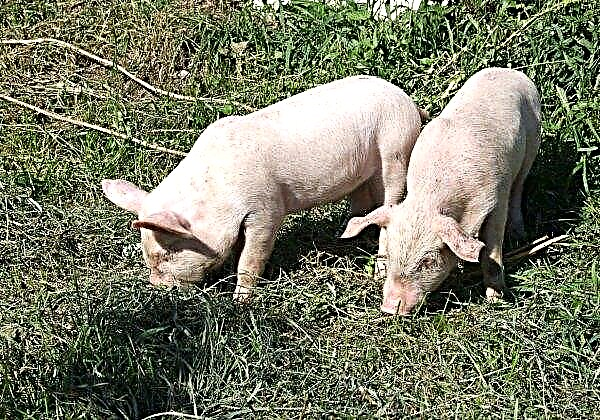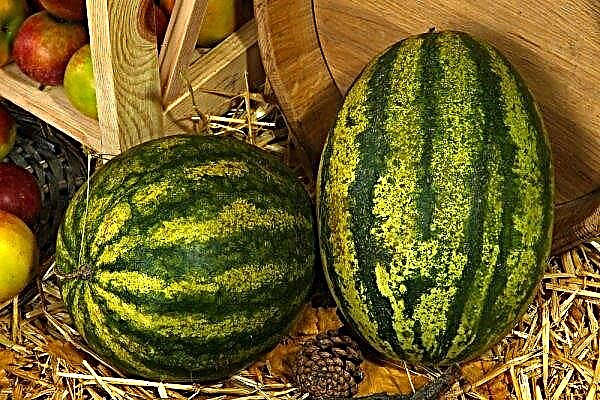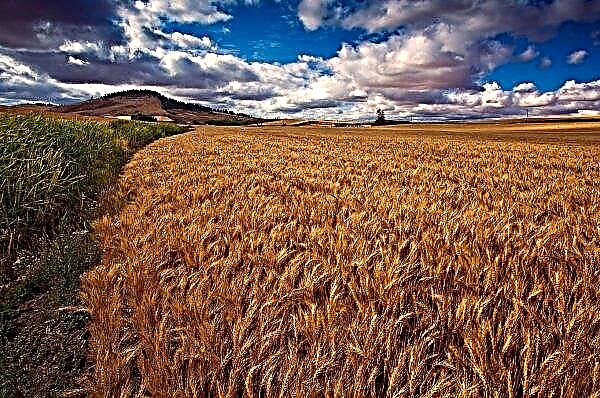Pigeons are perhaps the most familiar bird for people: they are found in squares, on the streets. It is hard to imagine that there are more than 800 species of these birds, each of which is unique. With one of these breeds - a pigeon, the Monk will introduce this material.
Origin history
The merit in breeding a Monk's dove rightfully belongs to Germany, where this breed appeared in the XVII century. The name "monk" the pigeon received for its color and tuft-hood, similar to a monastic robe. The bird is distinguished not only by its appearance, but also by its noble behavior. Another version of the name is that these pigeons, separated from the flocks, flew alone, i.e., as a monk. Often the word "cross" is added to the name "monk" for the similarity of the colored feathers of the tail and wings when flying to the cross.
Did you know? Guided by the Earth’s magnetic field using the “internal compass”», the pigeon is able to find a way home at a distance of over 1000 km.
Such a long history of the species did not pass without a trace. Today it is almost impossible to meet purebred Monks. But as a result of crossing, new, improved varieties appear that have the same name - Monks. The selection of this species was based on racing pigeons, but now the birds are representatives of the decorative breed and are used as aviary exhibition.
General characteristics
The pigeon monk is not a very large bird compared to other members of the family.
The main distinguishing characteristics of this species are:
- light body color compared to the color of the head and tip of the tail;
- on the head there is a cap similar to the cap of a monk-capuchin;
- cruciform plumage;
- a snow-white feather ornament of the back of the head and neck in the form of a hood just below the back of the head. The feathers of the “hood” fit snugly to the head from ear to ear, gathering on the sides into sockets.
Did you know? Among the pigeons of the Monks, male horses stand out, so nicknamed for the habit of inviting strangers into the flock by jumping.
Appearance
The appearance of the bird is characterized by the following features:
- bird length 35 cm;
- strong and proportional physique, the body is slightly tilted;
- the head is large, elongated, the frontal part is sloping;
- between the ears is a crest-hood;
- the beak is 15-16 mm, medium thickness, closed, even and neat, a small wax is tight;
- the neck is thin and short;
- chest wide, girth of the chest part of the body 24-25 cm;
- wings are long, folded tightly pressed, do not protrude beyond the tail;
- the back smoothly passes into a flat tail, consisting of 12 tail feathers;
- paws short, red-pink, devoid of edge.
Also pay attention to other breeds of pigeons:
Behavior
Calmly and trustingly, pigeons belong to people who care for them, easily get used to the owner and are distinguished by devotion. Having a friendly character, these birds readily invite other pigeons to their flock. A brood of chicks is carefully guarded by parent pigeons. They are cared for and fed.
For a year, with good care and nutrition, pigeons can give 3-4 broods of pigeons. Blue coats are good hens and can hatch not only their eggs, which breeders often use for breeding pigeons. Females hatch and then take care of chicks of other breeds without making any difference between his and other chicks. The breed is not characterized by a long and high flight. More often they spend time sitting on the roof.
Varieties
Among the intraspecific representatives of the Cross monks there are two main ones:
- German cross monks.
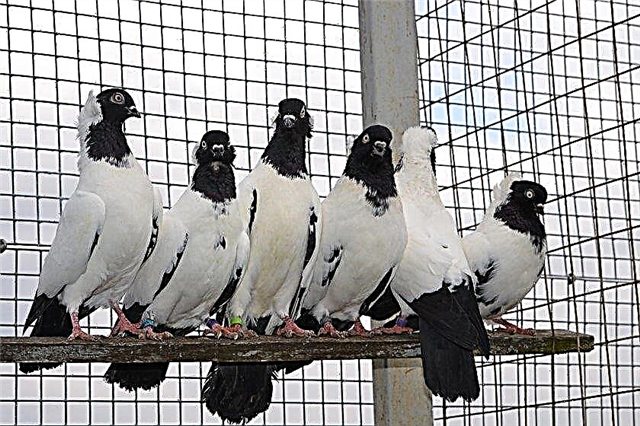
- Moscow monks.

These species are similar to the white plumage of the body, but differ in the saturated color of the feathers of the wings and tail: the color can be black, fawn, brick, blue.
In addition to the main breeds, there are other breeds of monks obtained as a result of crossbreeding:
- South german (space-footed and bare-footed). The plumage color is black, red, yellow, blue with white stripes, brilliant blue.

- Saxon (striped, blue lace). Obtained by crossing the Czech spacefoot Lisko and Bernburg trumpeter (other breeds are possible in crossing). The plumage of a diverse color - black, blue, red, yellow. White feathers and white stripes are possible for plumage.

- Ural. There is no data on breed selection. Presumably, the Tula monk, the Chasing kalot, the local spacefoot and chubaty species crossed. The plumage is white with pale yellow, light coffee with red, white with black. Sometimes there is a coloring of the head and a gray color.

- Tula. The latest breed of Short-billed Turmans. There is no official standard yet. At the place of breeding (Tula) they were called "Tula tape" and belonged to the racing species. But the presence of a colored crown made it possible to attribute them to the Monks. Due to the presence of genes of the racing species, they have high flight qualities and rapid flight.

German monk
There is no data on the origin of the breed. They belong to the middle-billed, flight-decorative rocks. It has good flight qualities and fast flight.
Did you know? Some pigeons have plumage no less bright than parrots. Yellow, green and red colors are present in the plumage of fruit pigeons.
Species characteristics are as follows:
- clearer multi-colored plumage (black, gray, gray, red, beige with white);
- white feathers of the body;
- the color of the feathers of the tip of the tail and head is brown or colored;
- bright iris, small black pupil;
- bird length 35 cm;
- round chest, chest circumference 24-25 cm;
- the tail is flat, tightly assembled, of medium length, smoothly connected to the body;
- the beak is small, sharp (almost black in pigeons with a dark color and light in yellow and red);
- protruding crest-hood white.

Moscow monk
Pigeons of this species appeared in Warsaw in the twentieth century by crossing the Polish long-billed Turmans with the Hamburg chased batters. Flight performance is average, but the flight is high and maneuverable. The Moscow monk is not much different from the German Cross - a similar snow-white plumage, proud posture, crest on the crown.
The only difference:
- the feathers of the tip of the tail and head are painted in darker tones, almost black, but there are also brick, blue, yellow shades;
- crest is more disheveled;
- slight discoloration of the beak, feathers on the forehead and under the eyes.
The color of the beak depends on the color of the feathers on the head:
- black “hat” - white beak;
- brown "hat" - beige beak.

According to reviews, this species is distinguished by pugnacity with other relatives.
Altai monk
Barnaul lop-eared (big-headed) is also called the intraspecific breed of Altai monks. Received as a result of the selection of the Ural monks, but unlike their ancestors, they have great grace. The plumage on the head is black, reddish, brown or fawn. Relate to decorative breeds.
Important! Having lost as a result of selection of the quality of the racing species, monks cannot fly high and make long flights.
The Altai monk, possessing the same species characteristics as the previous two, has distinctive features:
- the color of the feathers on the head may be fawn, reddish, dark brown;
- paws slightly downy.

How to distinguish not a purebred dove
To participate in exhibitions as representatives of the breed of cross monks, birds must have species characteristics.
- Minor flaws:
- dark claws;
- light shades of tail feathers;
- beak less than 15 mm;
- sunken chest;
- wings of small length.
The absolute discrepancy between a purebred thoroughbred dove is determined by the following characteristics, which exclude participation in exhibitions:
- absence or rare plumage of a crest-hood;
- light tail;
- lack of clear boundaries of plumage color;
- thick beak;
- large head with white stripes;
- feather feathers on the legs;
- iris color different from white or pearly;
- small body size.
Content Features
In everyday life, the pigeon Monk is unpretentious, in captivity easily reproduces, its maintenance does not require complex and costly care.

Indoor Conditions
The rules for keeping pigeons and the necessary requirements for the premises must meet the following conditions:
- each bird should have its own place for hatching masonry and rest;
- lack of partitions and gratings - pigeons should move freely;
- Mandatory availability of feeders and tanks for drinking and bathing, where you regularly need to change the water;
- it is advisable to obscure the room in the heat;
- regularly and thoroughly ventilate; ventilation systems are used on farms for this;
- comfortable temperature for pigeons + 10 ... + 25 ° С;
- Monks are clean birds, but cleaning and disinfection of the premises is necessary (daily and general once a week, disinfection once every six months before hatching and after molting);
- inspection of the flock is carried out during feeding daily in order to identify sick and weak;
- for the prevention of birds, they are drunk with a solution of potassium permanganate and vaccines are administered according to the instructions after consulting specialists.
Important! Disinfection is carried out in the absence of birds. All surfaces and feeders are treated with a disinfectant solution, followed by ventilation.
Breeding pigeons must be carried out in accordance with sanitary standards.
Feed base
Although pigeons are almost omnivorous, a properly selected and complete diet will ensure the normal formation, development, species characteristics and resistance to diseases.Pigeons have a physiologically short intestine compared to body length (1: 7), so there is a frequent need for food. Plant fiber is not fully absorbed, so the diet must be made with protein (at least 15%) and fiber (5%).

When compiling a diet, one should take into account how a particular food affects the bird and its digestibility:
- Oats, barley. The content of a large amount of fiber in this grain has a positive effect on the functioning of the feathered stomach.
- Corn. The high nutritional value of grain in comparison with other feeds provides the bird with energy and is well absorbed. It is recommended to give when the offspring and when molting birds.
- Lentils. Lentil feed is a source of plant protein.
- Cannabis and Flax Seeds. Balance the level of fats and amino acids in the diet.
- Millet (millet). An excellent source of vitamins and minerals, proteins and fiber for the full development.
- Sorghum. By nutritional value, grain is close to corn, but contains more vegetable protein. According to pigeon breeders, birds give preference to this particular cereal.
Did you know? If we compare the weight characteristics of representatives of the pigeon family, then the weight of the largest Crowned Pigeon reaches 3 kg, and the weight of the smallest Striped dove - 30 g.
Grain Requirements:
- high-quality and matured;
- not etched;
- without impurities and dust;
- no signs of fungus and mold.
In addition to cereals, it is desirable to add fish oil (10 ml per 1 kg of feed) to adult birds for feed. Pigeons are given wheat soaked in water. Bread and boiled potatoes should be included in the diet as an additive to grain feed.

Weakened pigeons, except for cereals (wheat, corn, rice), are given:
- fodder yeast;
- millet porridge;
- fish oil (3-5 drops).
Glucose (5%) can be added to drinking water. During mating, the diet is made taking into account the high content of proteins and mineral components. The basic part of the feed should be legumes (peas, vetch, lentils), with the addition of cereals (millet, barley, oatmeal, corn), which contribute to the rapid saturation of the bird.
Important! When mating, adaptation, disease and molting in the feed should be more fat. In such periods rape, raw sunflower seeds, hemp, and flaxseed are suitable for feeding.
In winter, peas, corn, and vetch should be excluded from the diet. In pigeons, such mixtures provoke clutch, and peas have a bad effect on digestion. It must be remembered that only a balanced and varied diet will benefit the birds. It is advisable to formulate mixtures with various components, constantly changing them.
It will be useful for you to read about the various nuances of keeping pigeons, namely:
A rare and ancient breed of pigeons Monk today is almost never found. But, if you decide to do pigeon breeding, look at a couple of birds you like from existing breeds. With proper care and low costs, they will soon become a pack.









